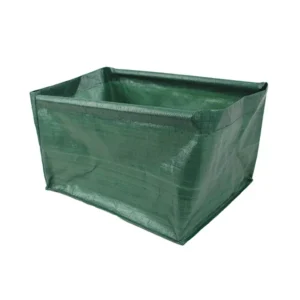A Garden Sieve is a super handy tool that every gardener should have. It’s pretty simple – just a frame with a mesh or net in the middle. What it does is cool: it helps you get rid of stuff you don’t want in your soil, like big rocks or chunks of dirt, leaving you with nice, smooth soil that’s perfect for planting seeds.
Using a garden sieve means you can make sure your plants have the best dirt without any big pieces that could get in the way of growing roots. Plus, when you’re spreading compost in your garden, sieving it first makes it spread out better and gives your plants more of the good stuff they need to grow.
But garden sieves aren’t just for working with soil. You can also use them to clean seeds, wash small stones for a fish tank, or even look for cool things in the dirt like a treasure hunter.
Diverse uses of a Garden Sieve!
1. Improving Soil Quality
- Removing Debris: The primary use of a garden sieve is to filter out rocks, sticks, clumps of dirt, and other debris from your soil. This results in smoother, finer soil that's ideal for planting.
- Aerating Soil: By breaking up clumps and removing larger particles, sieving helps aerate the soil, ensuring that air and water can move freely around plant roots, which is crucial for healthy growth.
2. Preparing Seed Starting Mix
- Ensuring Fine Texture: For seedlings to thrive, they need a fine, nutrient-rich starting mix. A garden sieve can help create the perfect environment for seeds to germinate by removing any larger particles that could impede the tiny roots of new plants.
3. Compost and Mulch Application
- Enhancing Compost: Before adding compost to your garden beds, sieving it can help break down larger organic materials into a finer consistency, making the nutrients more accessible to plants.
- Spreading Mulch: Similarly, sieving mulch can remove larger pieces, providing a uniform texture that looks neater and is more effective at retaining soil moisture and temperature.
4. Lawn Care
- Top Dressing: When applying a top dressing to your lawn, using a garden sieve ensures that the material is fine enough to filter down to the soil surface without smothering the grass, promoting a healthier lawn.
5. Gardening Projects
- Creating Potting Mix: For those who mix their potting soils, a garden sieve is invaluable. It allows you to customize the soil's texture and composition, ensuring it's just right for your specific plants.
- Washing Gravel or Sand: If you're setting up a terrarium or a fish tank, a garden sieve can be used to wash gravel or sand, removing dust and debris for a cleaner environment.
6. Seed Harvesting and Cleaning
- Separating Seeds from Chaff: After collecting seeds from plants, a garden sieve can help separate the seeds from the surrounding chaff and plant material, making it easier to store and plant seeds later.
7. Archaeological and Treasure Hunting
- Sifting Through Soil: Not just for gardening, a garden sieve can also be a fun tool for kids and adults alike to sift through the soil in search of archaeological finds or treasures in your backyard.




